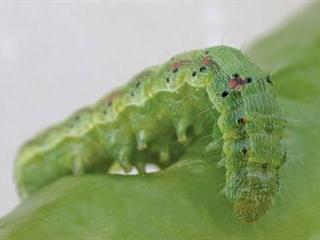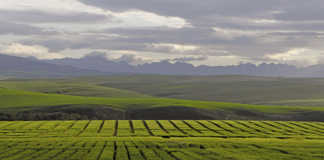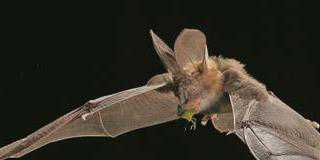
The African bollworm (Helicoverpa armigera) is considered a major pest in Southern Africa. Due to its aggressive feeding behaviour, it has a significant impact on a wide range of host crops, including beans, citrus, cotton, maize, tomato, drying wheat ears, lettuce heads and even rosebuds. The bollworm can be controlled by a variety of chemicals, depending on the crop infested, but many of these present complications.
Because the bollworm has a habit of entering the fruit, boll or pod, the plant affords it a good deal of protection against chemical sprays, making control almost impossible. “A short-lived chemical is often necessary as the fruit is attacked shortly before harvest. This is particularly the case in tomatoes, but is also a problem in beans, peas, gooseberries and sweetcorn,” says André Fox, CEO of Madumbi Sustainable Agriculture.
“In these cases, chemicals such as mevinphos and endosulfan are often recommended, while other chemicals registered for control of this pest are carbaryl, tetrachlorvinphos and synthetic pyrethroids. However, many of these have in recent years been deemed unsuitable for vegetable crops, and safer formulations containing Bacillus thuringiensis (a bacterial disease
in many insects) have become available.” Another problem is that bollworm has a tendency worldwide to develop resistance to chemicals, particularly synthetic pyrethroids.
New weapon
A virus, Helicoverpa armigera nucleopolyhedrovirus (HearNPV), could soon offer South African farmers an effective alternative treatment. HearNPV is contained in Bolldex, a Swiss product not yet commercially available here. Madumbi Sustainable Agriculture have applied for registration – initially for tomato and lettuce use, but with expansion to other crops planned.
“This virus is the new kid on the biologicals block,” says Fox.
“It shows excellent population reduction of African bollworm. It leaves no residue and is species-specific, so there’s no impact on beneficial insects such as bees or parasitoids. It’s perfect when used as part of an integrated pest management programme.” As with many caterpillar pests, best results are achieved if control measures are taken against the early stages, and scouting procedures are recommended to detect eggs and very young larvae.
“Timing is critical,” says Fox. “For the best results, you should spray the crop when you see the first pest eggs or when the eggs start to hatch. The larvae feed on their eggshells and so ingest the virus particles at a very young larval stage, resulting in a higher efficacy rate. If the eggs can be infested before the larvae start searching for food, damage control will be much more effective.”
Should this window period be missed, the virus can be sprayed onto the crop, flowers and fruit where larvae are present. When the larvae initially tunnel into the fruit, or when they feed on the fruit, they ingest the virus particles. Bolldex should be applied by a sprayer at a low dose rate of 200ml/ha, repeated every seven days until the pest is controlled. It is compatible with fungicides, insecticides and foliar feeds, provided the pH is managed.
“It’s very important to manage the pH in the tank mix,” explains Fox. “It should be kept at between 5 and 8, otherwise the virus protein capsule, which protects the virus against UV rays, will dissolve and the unprotected virus will not be as effective. For this reason, it’s also important that the product be applied in the late afternoon or during low UV periods.”
SA trials
While Madumbi awaits product registration, it is conducting trials in South Africa, applying Bolldex to citrus, tomato, peaches and wheat. “We’ve had a more than 90 % success rate in the reduction of African bollworm populations and have also had very good results in reducing crop damage when the product is applied as recommended,” says Fox.
One of the trials was conducted with Bushveld Fruit Growers and Processors and Laeveld Agrochem in Marble Hall on a 4ha crop of San Pedro peach trees under hail netting. Bolldex was applied with an orchard mistblower at a rate of 1 500l/ha with
a Bolldex dose of 200ml/ha. The eggs and larvae were treated at the first signs of bollworm eggs, just after fruit set. Four applications were repeated at seven-day intervals.
The standard treatment was with Bacillus thuringiensis at a rate of 500g/ha. There was no untreated control, due to the high value of the crop. “Infestation pressure was very high, with up to 16 eggs on a single fruit in some instances,” recalls Fox. “Bolldex yielded 99% scar-free fruit while the Bacillus thuringiensis treatment gave 90% to 95% scar-free fruit. Had no treatment been used, the farmer could have experienced a crop loss of up to 50% as a result of poor quality.”
Viruses such as those contained in Bolldex can also be used in combination with chemical sprays. “The chemicals immediately target and knock down the pests while viruses reduce numbers in the next generation. When applied correctly they reduce populations to economically manageable levels,” Fox concludes.













